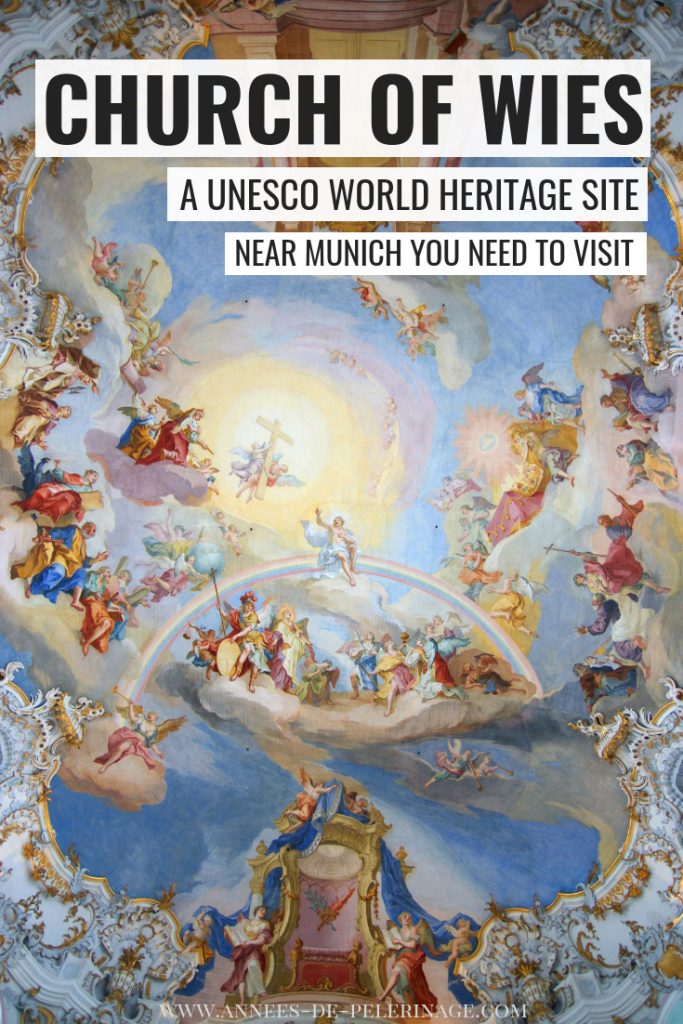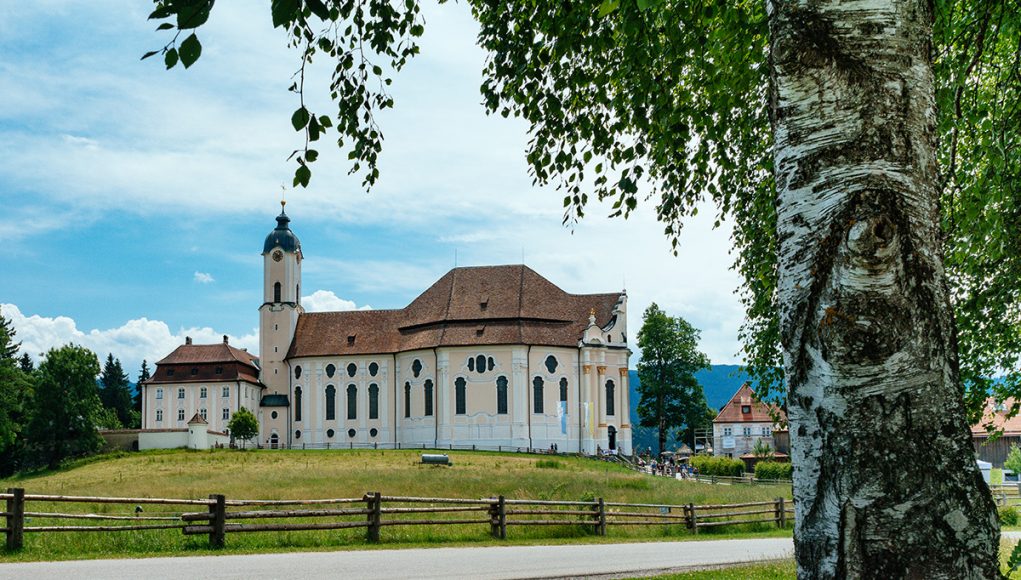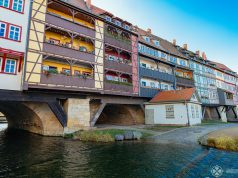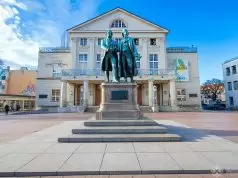Everything you need to know to plan your visit to the Pilgrimage Church of Wies – a unique UNESCO World Heritage site only a short day trip from Munich.
More than 1 million tourists visit the small village of Wies close to the Bavarian Alps each year. They come here from Munich (read my guide) to experience the marvelous rococo frescos by Johann Baptist and Dominikus Zimmermann inside the Pilgrimage Church of Wies. They are so outstanding and unique that the UNESCO declared the small Wieskirche a UNESCO World Heritage site in 1983.
Here’s what you need to know to plan your visit:
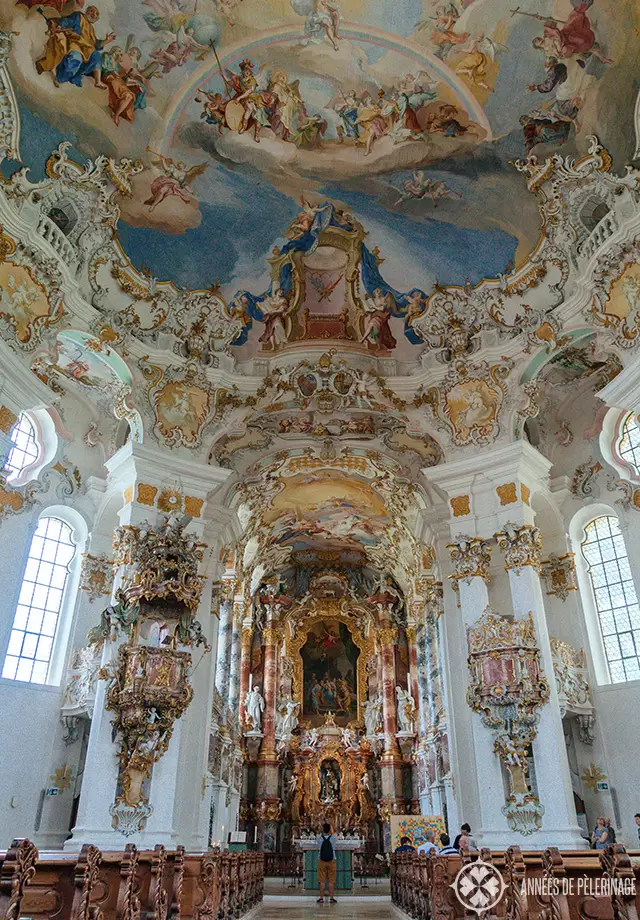
The Wieskirche (actually Pilgrimage Church of the Scourged Saviour) dates back to 1738. Back then Maria Lory noticed tears trickling down from an eye of a wooden statue of the Scourged Saviour. Just one year later, people came in droves to see the miracle themselves and a small wooden chapel was constructed.
6 years later, in 1745, things got out of hand. The famous brothers Johann Baptist and Dominikus Zimmermann were commissioned to build a massive pilgrimage church that ultimately costs six times as much as originally planned (180,000 florins instead of 39,000).
In hindsight, of course, that was money well spent, as it truly is one of the best day trips from Munich (read my list of the 20 best), but back then it almost led to the bankruptcy of the Steingaden Abbey.
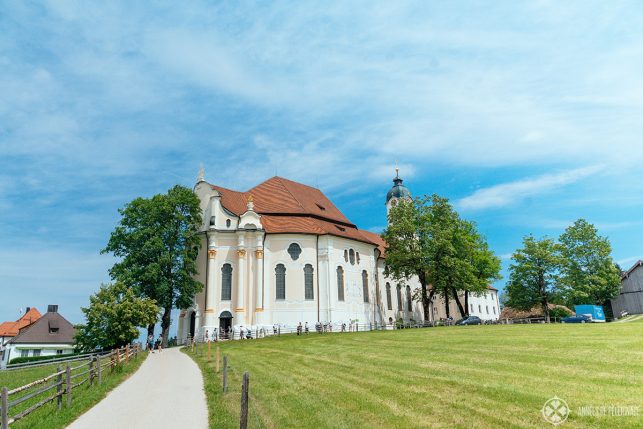
Still, it was the miracle that led to the construction of the formidable rococo church right in the middle of nowhere.
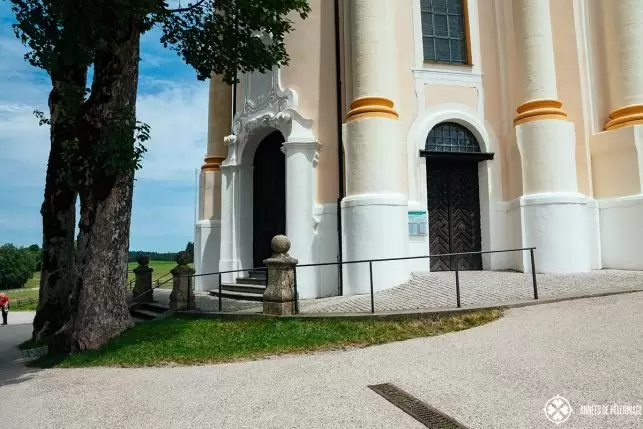
From outside, the church looks rather plain. I, as a local, would say: A bit like 90% of all other churches in Bavaria. Which is of course, not true at all, as the green meadows around it serve as a particularly beautiful setting.
There are in fact few other examples from that time that are so well-preserved and form such a unique harmony between art and the countryside.
Wieskirche Interior
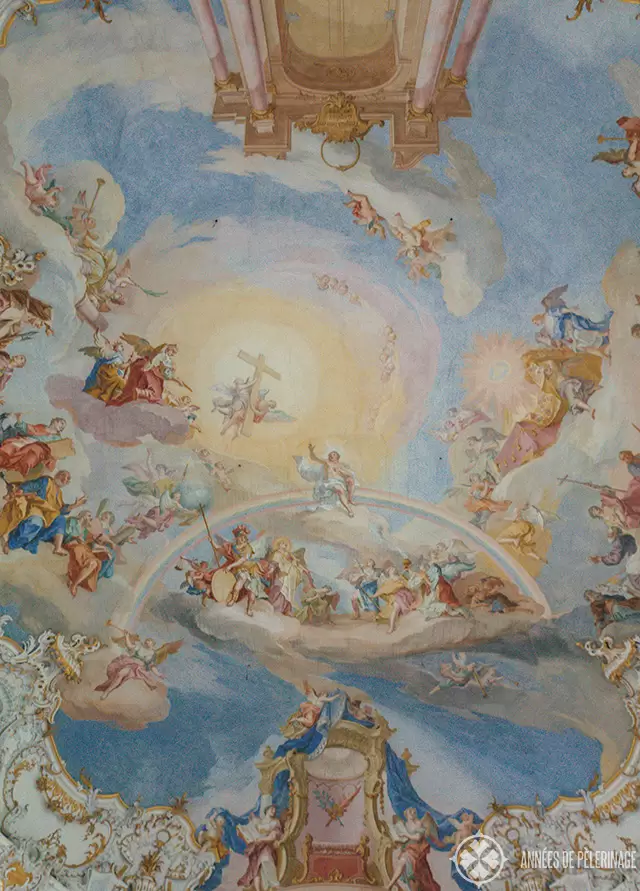
Once you enter the Wieskirche, you will soon realize just why the UNESCO deemed this remarkable place worthy of an inscription into the World Heritage list.
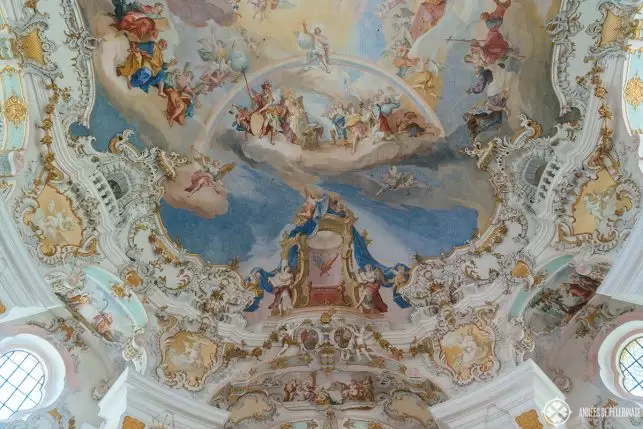
A gigantic oval fresco is framed by stucco decorations and gilded sculptures. Despite the sensual overload, the fresco doesn’t appear gaudy at all. Instead, it feels every bit like entering heaven through the gigantic golden portal above the main entrance.
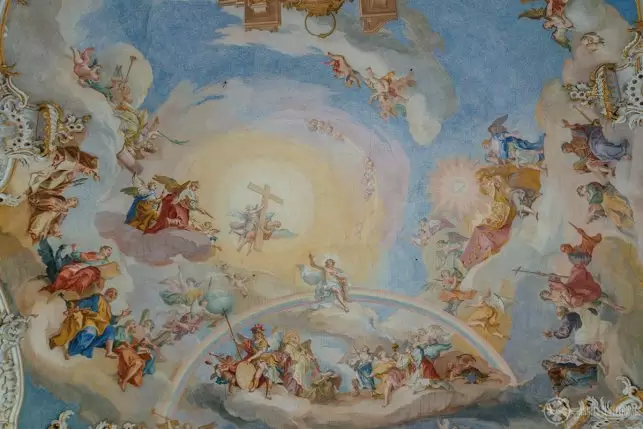
An abundance of angels and saints crowds the iridescent sky, while the masterful Trompe-l’œil effects make it almost feel real. Most impressive is perhaps the usage of light that creates an unstrung continuity and lightness of the whole ensemble.
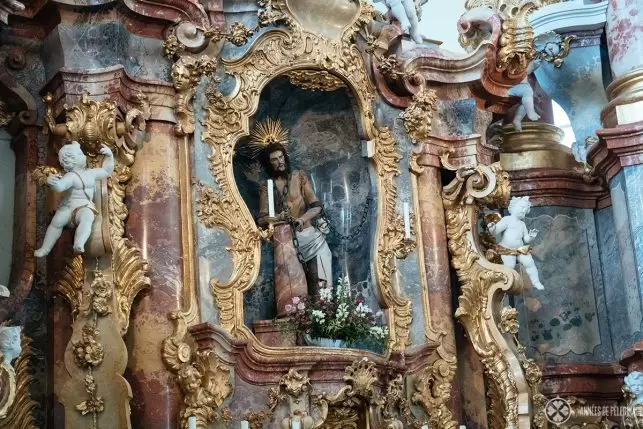
In the middle, you cannot help but notice the huge altar with its statue of the Scourged Savior, the very statue that founded the Pilgrimage to the Church of the Wies. Starting from May 1st each year, thousands of devotees pave their way to the Bavarian hinterland to place their prayers into the hands of Christ.
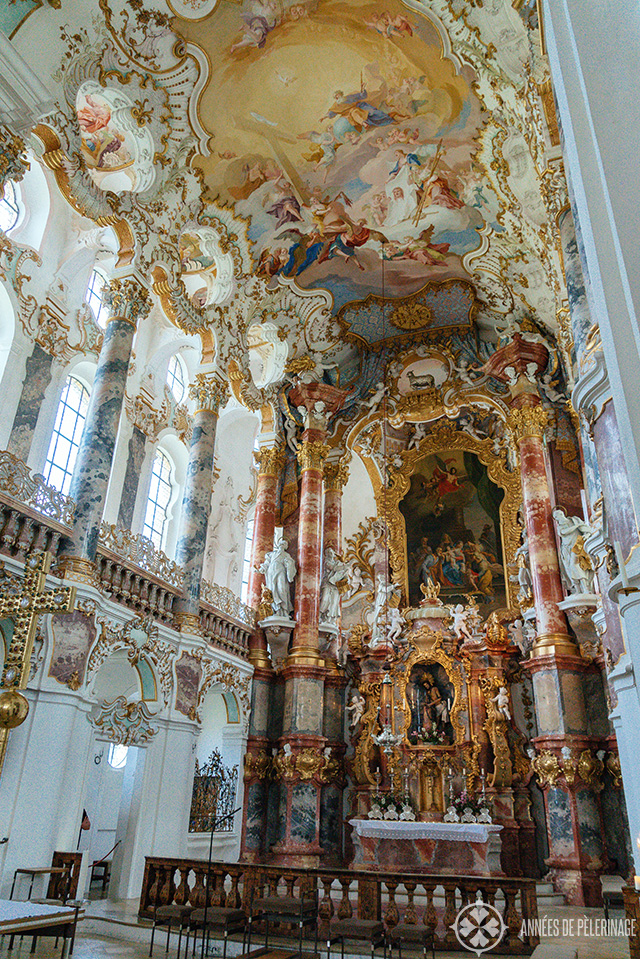
A living tradition that has been ongoing for more than 200 years now and was another reason the UNESCO felt this church meets the Criterions for a World Heritage site.
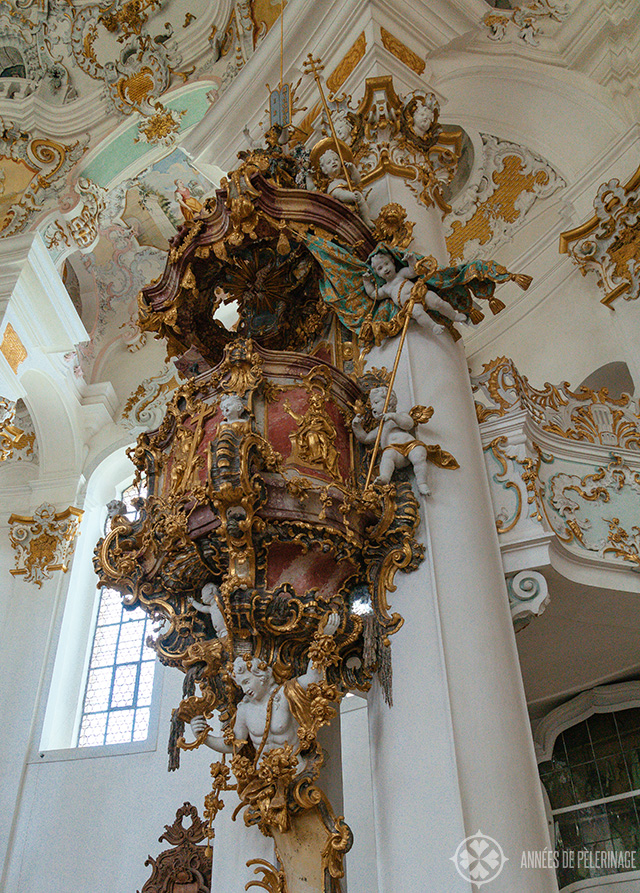
I particularly liked the towering pulpit with its playful putti crowding the gilded length into the sky. It feels like you could spend a day glancing at the masterwork and still find new details
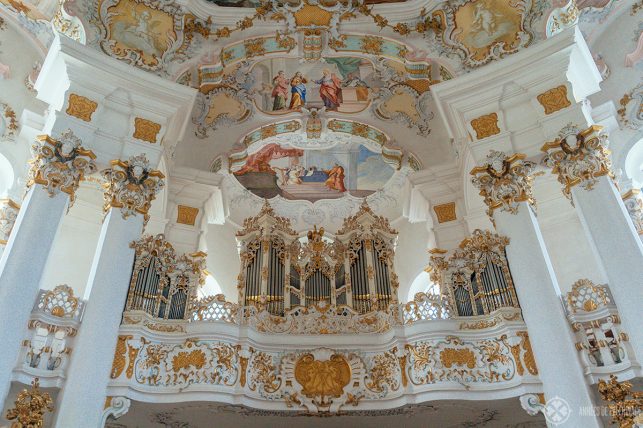
On the back of the church, right behind you, you will also notice a beautiful organ. While the casing dates back to the time of Zimmerman, the instrument itself was renewed in 2010. During the summertime, there are organ concerts almost every evening.
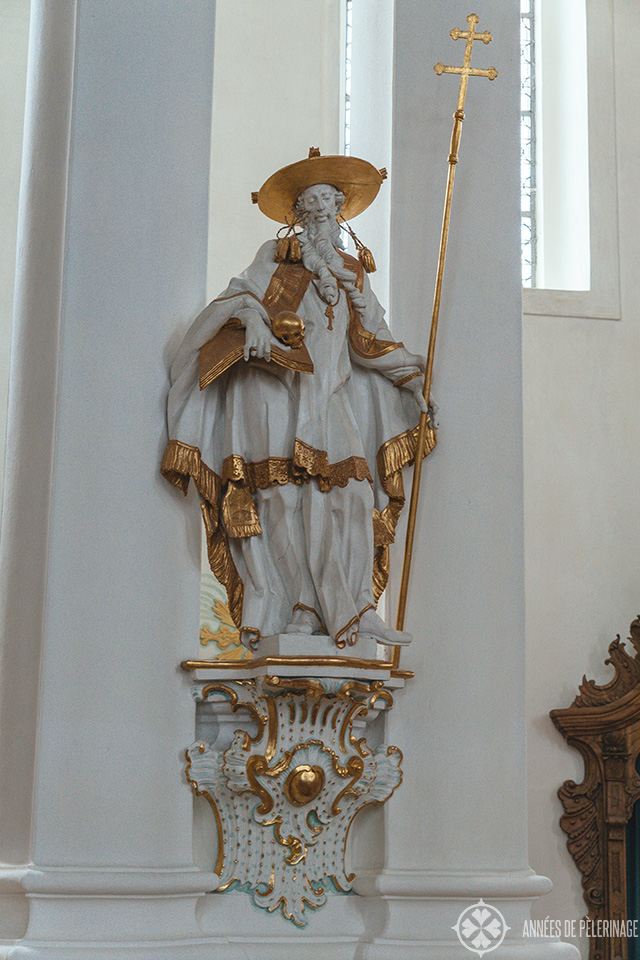
Scattered throughout the church, you’ll also find a couple of lovely statues of saints. Again, note how tasteful the rococo style is applied to fit into the whole ensemble of the church.
Note: If you like to see an equally impressive Baroque masterpiece, check out the Fürstenfeld Abbey 25 minutes outside Munich.
Opening hours of the Wieskirche
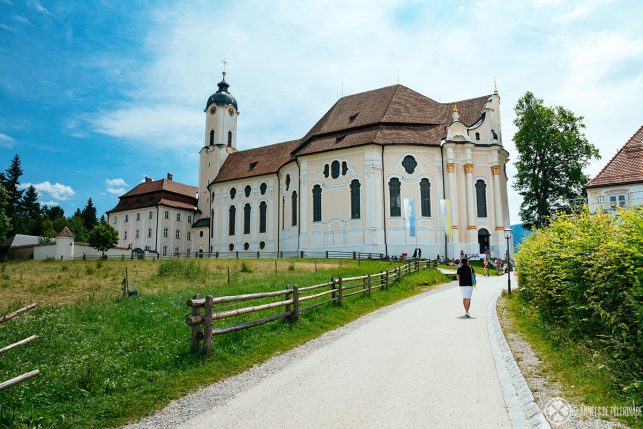
The Church of the Wies is open every day between 8:00 am and 8:00 pm. Only during the European winter time, it already closes at 5:00 pm. Kindly take note, however, that the Wieskirche is a very active Pilgrimage site.
It is not possible to tour the church during a mass (though you are invited to join into the prayer!). This means, Sunday morning and a couple of other timeslots throughout the week. Best time to visit is between 8:00 am and 10:00 am. In the afternoon there is quite a high chance there is a special pilgrimage service.
You’ll find a detailed overview on the official website of the Wieskirche.
How to get to Wieskirche from Munich & beyond
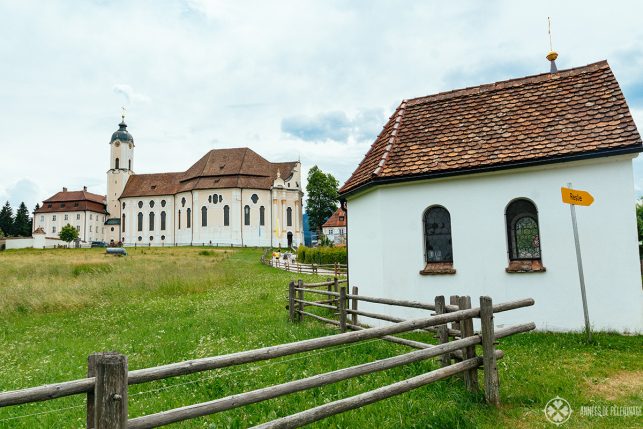
The Wieskirche is fairly easy to reach with public transport, despite the fact it’s located in the middle of the Bavarian nowhere.
I actually recommend you to rent a car nevertheless, as there are a couple of other outstanding tourist highlights in the region (Castle Neuschwanstein, Ettal, Füssen to name a few). A car makes things a lot more versatile and if you are traveling as a group it will not be all that much more expensive. It’s also the fastest option
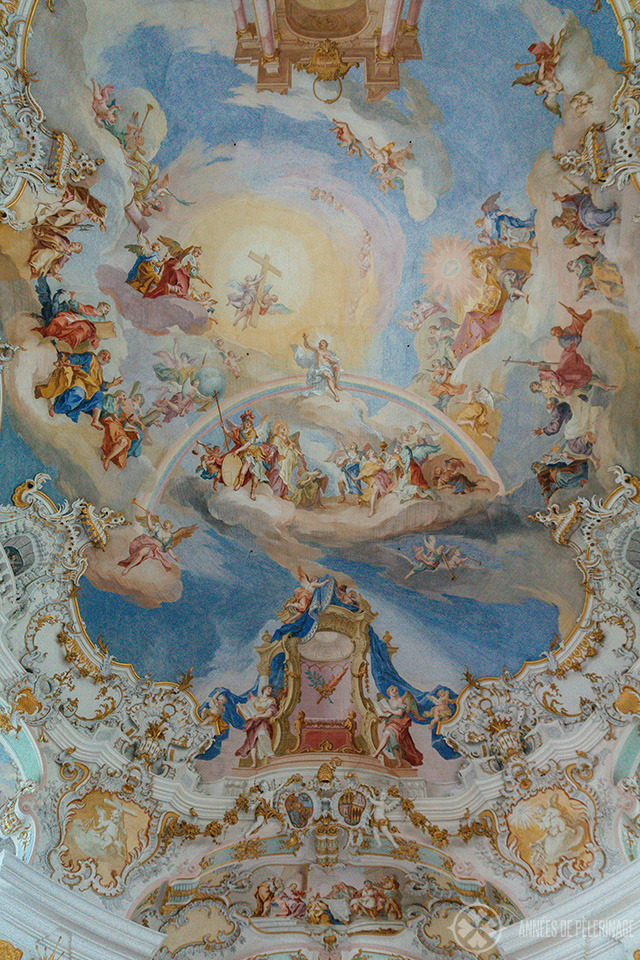
There are guided tours from Munich you can take as well. Not all Neuschwanstein tours include the Wieskirche, but this one does. Highly recommended if you don’t want to spend time planning out the day and value a guide who can really give you some background information.
If you traveling alone, then fear not, you can easily get to the Wieskirche from Munich in about 2 hours. Take the train to Weilheim (40min), leaves ever 30 minutes. And from Weilheim you gotta take the Oberbayern Bus #9651 to Wieskirche (1hour).
The official website of the German Railway service (Deutsche Bahn) will help you plan your itinerary.
Füssen to Wieskirche
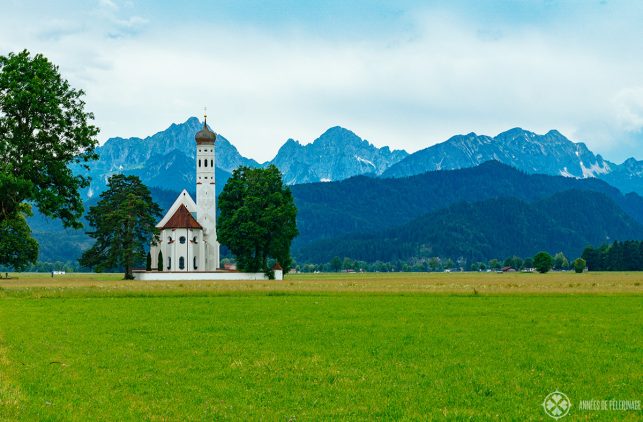
You could also opt to go from Füssen to Wieskirche. This option is better if you want to see the castles there as well and stay a night. Trains leave every hour from the central station in Munich and it takes about 2 hours. From Füssen you have to take Bus #9606 (44min) to Wieskirche.
So, this was my guide to visiting the Wieskirche from Munich and beyond. Got any questions? Leave them in the comments below.
